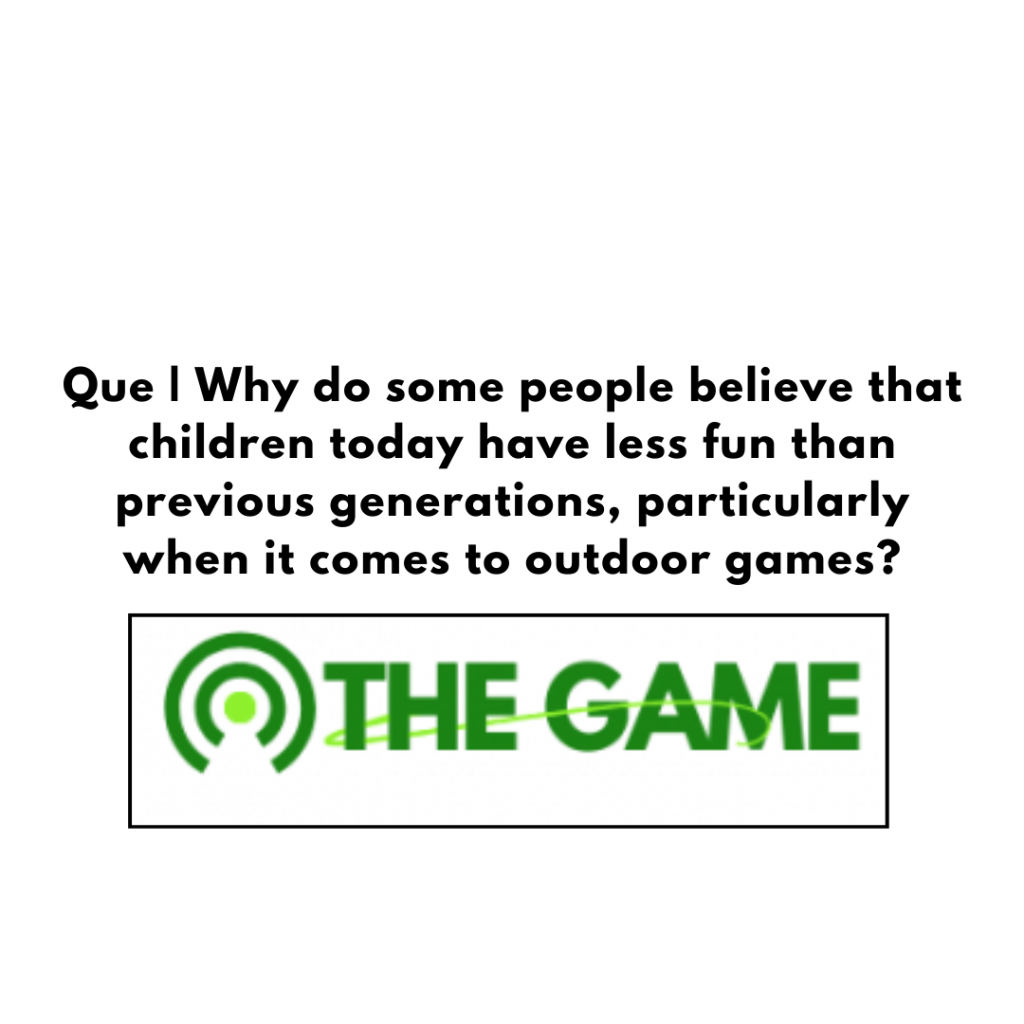Outdoor games that require no special equipment are just the thing for fun in the spur of the moment and can be played with an even number of players. For several warm days in the park, a game in the backyard, or even at a family gathering, outdoor games that require no special equipment of their own are engaging, and exciting, and encourage physical activity and social interaction. Three players make quite unnecessary elaborate setups or special gear. Below are some quite unusual, fun, and easy games to play outside with only three players.
1. Freeze Tag
It’s a traditional game that does not need any equipment, is easy to understand, and is fun for all generations. One person has to be “it,” trying to tag the rest. When tagged, he freezes in place until someone else unfreezes him by tagging him. This game continues until everybody has frozen, and then roles are switched.
Why Play: Freeze Tag encourages physical activity, agility, and teamwork. It’s a game that encourages motion and quick reflexes, hence a good game for outdoor fun with minimal preparation.
2. Shadow Tag
Shadow Tag is a variation of the classical game of tag. This game is played in a way where players will try to “tag” others by stepping over the shadow instead of physically touching them. The person whose shadow is tagged will become “it” and start attempting to tag other’s shadows of the rest of the players. It is a suitable game that can be played on bright, sunny days. It encourages running, jumping, and at the same time awareness of surroundings.
Why Play: This game requires the children to be better in touch with the position of the sun and also with their movements, thus, forcing them to be more coordinated and fast. It is a great way to keep fit and have fun while using nature’s gift, the sun, as part of the challenge.
3. Sardines
Sardines is a funny and modern version of the classic hide-and-seek where the excitement of hiding is combined with a cooperative edge. A player hides, and other players have to look for him or her. When he or she finally gets tracked down, a player has to be quiet and squeeze into the same hiding spot as the hidden one, just like how the sardines are packed in a can. The game goes on till all the players get crammed in the same spot.
Why Play: Sardines encourages collaboration, sneakiness, and creativity. As it’s an excellent game for small groups because people work together to find the perfect hiding spot, it’s much more enjoyable and less competitive than a standard game of hide-and-seek.
4. Human Knot
Human Knot: This activity is a great non-competitive, fun game that practically relies on teamwork and communication more than anything else. Players stand in a circle and each holds hands with two different people (not the people next to them). The aim will be to untangle the knot while holding onto each other’s hands without letting go. They will stay playing until everyone is standing in a circle again and untangled and free.
Why Play: Human Knot promotes communication, critical thinking, and problem-solving. It is an excellent game for promoting cooperation and trust among small groups of three players.
5. Three-Legged Race
The three-legged race is a fantastic game for testing the balance, coordination, and teamwork of the players. Two players tie their adjacent legs together by either a scarf, belt, or other material found and have to race to a marked finish line, and another player cheers and acts as the timer. The race can be run several times with different combinations of teammates.
Why Play: This is a play game that involves cooperation requiring joint physical coordination. This is just one entertaining way of making each other fall when balancing on every piece created, meanwhile promoting teamwork between the players.
6. Statue
One person would be the “statue maker” and the other two would be the “statues.” The statue maker would yell certain poses or actions the players have to freeze into, like “frozen animal” or “superhero stance.” The statue maker walked around and observed how well the players followed what he was saying. If a player moved or laughed, they were out, and the last one standing won.
Why Play: Statue promotes creativity, balance, and concentration. This game is very fun in which players have to hold a pose for such a long period that will try their concentration and body control.
7. Pirates and Sailors
Pirates and Sailors is one of the simplest yet creative outdoor games on the list. It only carries two roles: the pirates and the sailors. The commands given to the roles are either “pirates” or “sailors,” and the children must take the stance or movement immediately. For example, when “pirates” are called, they pretend to be pirates by doing pirate-like gestures, and when “sailors” are called, they do a sailor’s salute or any other related movement. If a player reacts slowly or makes a wrong movement, that player is out.
Why Play: This activity uses swift thinking and body movements. The children would have to react fast to various commands. It encourages creativity, and it develops mental acuteness as well as coordination of the body.
8. Catch the Dragon’s Tail
The game is played in lines such that the lead player will be the “head” of the dragon, and the last player will be the “tail.” The head tries to catch the tail by running around and trying to grab it. Players have to work in conjunction to make this line longer and consequently harder to catch. The game is over when the head captures the tail, and the roles can be swapped.
Why Play: Teamwork, coordination, and strategy are some of the aspects that this game will promote. The players have to work collectively in order not to let the head capture the tail, making it highly entertaining for three participants.
9. Blindfolded Obstacle Course
One of the players must be under two other players’ guidance while blindfolded in a course that is laid in the yard or park. The guide will not touch the blindfolded player but give verbal instructions to see to it that he or she hits the right course. Roles are then switched after each participant has been through the course.
Why Play: This game fosters communication, trust, and listening skills. It’s also a fun way to test and challenge each other to be able to adhere to instructions and be good guides for one another while providing adequate physical activity.
10. Four Corners
Four Corners is a light but exciting game. In this three-player version, you mark off an area with imaginary or marked “corners” (or simply divide the space into three areas). One player stands in the middle of it. This player is not looking, and the others run to one of the three corners. The purpose of this game is not to get tagged if he turns around. If someone in the middle gets tagged someone, they switch places.
Why Play: Four Corners is an activity that demands much for it to be effective, in terms of agility, strategy, and quick thinking. The game also makes the kids think on their feet and make very fast decisions, which is very much fun for everyone.
Conclusion: Fun Without Equipment
These outdoor games are perfect for three players because they require less equipment or no equipment at all. This way, everyone can have fun without being necessary for them to have special equipment. They stress physical activity, cooperation, creativity, and thinking on the spot; thus, they are perfect for developing valuable skills with fun. Either outside in the bright sun or on a freezing winter day, you will, for sure, strengthen connections, exercise your body, and laugh plentifully while taking the most of what nature offers. Gather your family and friends and give one of the following games a go next time you need some good old-fashioned, equipment-free entertainment!


